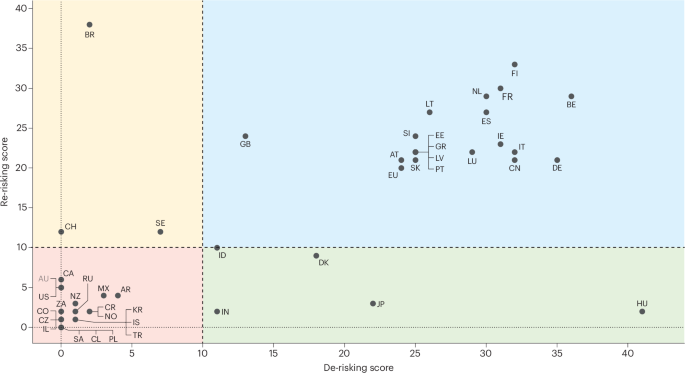How central banks address climate and transition risks
Nature Energy, Published online: 28 February 2025; doi:10.1038/s41560-025-01725-9Central bank management of climate risks is associated with climate politics, as opposed to a country’s economic exposure to transition risk, including stranded asset and clean energy investment risk. Central banks are not entirely autonomous actors that correct for the lack of national decarbonization policy—they rather complement existing national policies that aim to shift the economy from fossil fuels to clean energy.

Nature Energy, Published online: 28 February 2025; doi:10.1038/s41560-025-01725-9Central bank management of climate risks is associated with climate politics, as opposed to a country’s economic exposure to transition risk, including stranded asset and clean energy investment risk. Central banks are not entirely autonomous actors that correct for the lack of national decarbonization policy—they rather complement existing national policies that aim to shift the economy from fossil fuels to clean energy.









































































































































































